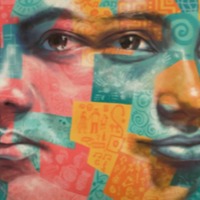
Jewell
There are an estimated 403,000 people living in modern slavery in the United States (GSI 2018). Sex trafficking exists throughout the country. Traffickers use violence, threats, lies, debt bondage and other forms of coercion to compel adults and children to engage in commercial sex acts against their will. The situations that sex trafficking victims face vary, many victims become romantically involved with someone who then forces them into prostitution. Others are lured with false promises of a job, and some are forced to sell sex by members of their own families. Victims of sex trafficking include both foreign nationals and US citizens, with women making up the majority of those trafficked for the purposes of commercial sexual exploitation. In 2015, the most reported venues/industries for sex trafficking included commercial-front brothels, hotel/motel-based trafficking, online advertisements with unknown locations, residential brothels, and street-based sex trafficking. Jewell Baraka was exploited for three years in prostitution and three years in pornography in the 1980s and 1990s, from age 11 to 17, in Portland, Oregon. Her narrative is from an interview with Francine Sporenda for the Révolution Féministe website, originally published in French and then in English by Nordic Model Now!, a UK secular, feminist, grassroots women’s group campaigning for the abolition of prostitution and related practices.
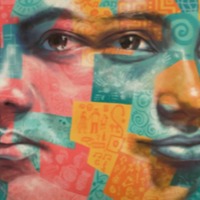
NE
There are an estimated 10,000 people living in modern slavery in Hong Kong (GSI 2018). Approximately 370,000 foreign domestic workers, primarily from Indonesia and the Philippines, work in Hong Kong; some become victims of forced labour in the private homes in which they are employed. An NGO report released in 2016 estimated as many as one in six foreign domestic workers is a victim of labour exploitation. Employment agencies often charge job placement fees in excess of legal limits, and sometimes withhold identity documents, which may lead to situations of debt bondage of workers in Hong Kong. The accumulated debts sometimes amount to a significant portion of the worker’s first year salary. Some employers or employment agencies illegally withhold passports, employment contracts, or other possessions until the debt is paid. Some workers are required to work up to 17 hours per day, experience verbal, sexual or physical abuse in the home, and/or are not granted a legally required weekly day off. NE, a 29-year-old woman from Ponorogo (2008-2010), was promised a salary of HK$4,000 (US$515) by her broker, but found out at the training centre in Jakarta that her actual salary would be much lower.
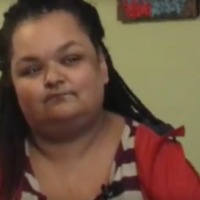
Laurie
There are an estimated 403,000 people living in modern slavery in the United States (GSI 2018). Sex trafficking exists throughout the country. Traffickers use violence, threats, lies, debt bondage and other forms of coercion to compel adults and children to engage in commercial sex acts against their will. The situations that sex trafficking victims face vary, many victims become romantically involved with someone who then forces them into prostitution. Others are lured with false promises of a job, and some are forced to sell sex by members of their own families. Victims of sex trafficking include both foreign nationals and US citizens, with women making up the majority of those trafficked for the purposes of commercial sexual exploitation. In 2015, the most reported venues/industries for sex trafficking included commercial-front brothels, hotel/motel-based trafficking, online advertisements with unknown locations, residential brothels, and street-based sex trafficking. Laurie was around 9 or 10 years old when she started working as a sex worker in Minneapolis.
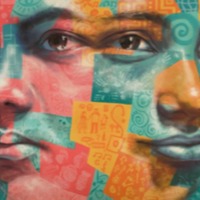
Afzal
There are an estimated 6000 people living in conditions of modern slavery in Kuwait (GSI 2018). Men and women migrate from South and Southeast Asia, Egypt, the Middle East, and increasingly throughout Africa to work in Kuwait, predominantly in the domestic service, construction, hospitality, and sanitation sectors. The vast majority of migrant workers arrive voluntarily; however, upon arrival some sponsors subject migrants to forced labour, including through non-payment of wages, protracted working hours without rest, deprivation of food, threats, physical or sexual abuse, and restrictions on movement, such as confinement to the workplace and the withholding of passports. Many of the migrant workers arriving in Kuwait have paid exorbitant fees to labour recruiters in their home countries or are coerced into paying labour broker fees in Kuwait which, according to Kuwaiti law, should be paid by the employer—a practice making workers highly vulnerable to forced labour, including debt bondage. To a lesser extent, migrant women are also subjected to forced prostitution. Afzal travelled from Bangladesh to Kuwait to follow his wife who had been working abroad for three years. Afzal was sent to do housework where he experienced threats, beatings and sexual violence at the hands of his employer and her sons.
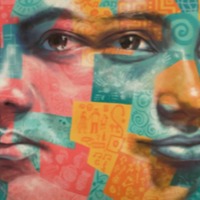
Christelle
There are an estimated 9000 people living in conditions of modern slavery in Gabon (GSI 2018). The country is a primary destination and transit country for West and Central African men, women and children subjected to forced labour and sex trafficking. Boys are forced to work as street vendors, mechanics, or in microbus transportation and the fishing sector. Girls are subjected to domestic servitude and forced labor in markets or roadside restaurants. Gabonese children are exploited as market vendors in eastern provinces of the country. In some cases, families willingly give children to intermediaries who fraudulently promise education or terms of employment they ultimately do not provide, instead subjecting the children to forced labor through debt bondage. Some traffickers procure falsified documents for child trafficking victims to make them appear older than 18 years old to avoid prosecution under the child trafficking law. Christelle’s home village is Assahoun, in the southwest of Togo (Maritime Region). She is the eldest of five children and was in Standard Five at the Catholic Primary School when she left with traffickers on the long journey to Gabon. Today, Christelle is back in her village with her parents. She is under apprenticeship to become a seamstress. Her training is being supported as part of a joint effort by Plan Togo and the Department for the Protection and Promotion of the Family and Children and is financed by Plan Togo.
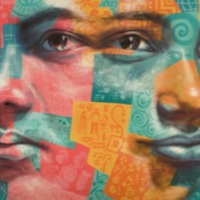
Aatifa
There are an estimated 518,000 people living in modern slavery in Egypt, 465,000 in Sudan and an estimated 451,000 in Eritrea (GSI 2018). Since 2006 tens of thousands of Eritreans fleeing widespread human rights abuses and destitution have ended up in Egypt’s Sinai Peninsula. Until 2010, they passed through Sinai voluntarily and generally without any problems and crossed in to Israel. However, since then, Sudanese traffickers have kidnapped Eritreans in eastern Sudan and sold them to Egyptian traffickers in Sinai who have subjected at least hundreds to violence in order to extort large sums of money from their relatives. Aatifa* was kidnapped, raped and beaten for a month on her way to Israel from Eritrea.
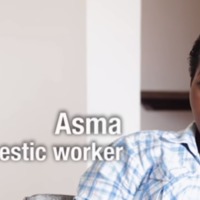
Asma A.
There are an estimated 9000 people living in conditions of modern slavery in Oman (GSI 2018). It is is a transit and destination country for men and women primarily from India, Pakistan, Bangladesh and the Philippines, most of whom migrate willingly as domestic servants or low-skilled workers in the country’s construction, agriculture and service sectors. Trafficked persons subsequently experience conditions of modern slavery such as the confiscation of passports, restrictions on movement, non-payment of wages, long working hours without rest and physical or sexual abuse. Asma left her infant daughter in Tanzania in 2015 to work in Oman as a domestic worker. However, she found that her employers paid her far less than she expected and she was subjected to sexual abuse.
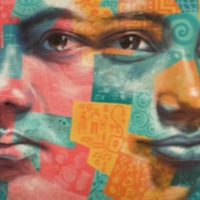
Taylor
There are an estimated 403,000 people living in modern slavery in the United States (GSI 2018). Sex trafficking exists throughout the country. Traffickers use violence, threats, lies, debt bondage and other forms of coercion to compel adults and children to engage in commercial sex acts against their will. The situations that sex trafficking victims face vary, many victims become romantically involved with someone who then forces them into prostitution. Others are lured with false promises of a job, and some are forced to sell sex by members of their own families. Victims of sex trafficking include both foreign nationals and US citizens, with women making up the majority of those trafficked for the purposes of commercial sexual exploitation. In 2015, the most reported venues/industries for sex trafficking included commercial-front brothels, hotel/motel-based trafficking, online advertisements with unknown locations, residential brothels, and street-based sex trafficking. Taylor was trafficked out of Florida by a family friend when she was 16 years old. Taylor was subjected to sexual abuse and trafficked around the country, forced to provide sexual services. She was finally able to escape and went to her mother who called the police. Taylor was in FBI witness protection while her trafficker was being prosecuted. She is now 18 years old and her trafficker has been sentenced to 30 years in federal prison followed by lifetime supervised release.
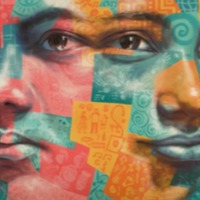
John
There are an estimated 403,000 people living in modern slavery in the United States (GSI 2018). Sex trafficking exists throughout the country. Traffickers use violence, threats, lies, debt bondage and other forms of coercion to compel adults and children to engage in commercial sex acts against their will. The situations that sex trafficking victims face vary, many victims become romantically involved with someone who then forces them into prostitution. Others are lured with false promises of a job, and some are forced to sell sex by members of their own families. Victims of sex trafficking include both foreign nationals and US citizens, with women making up the majority of those trafficked for the purposes of commercial sexual exploitation. In 2015, the most reported venues/industries for sex trafficking included commercial-front brothels, hotel/motel-based trafficking, online advertisements with unknown locations, residential brothels, and street-based sex trafficking. John was 4 years old when his father started selling him for sex. At the age of 16, he was abandoned on the street and forced to continue selling himself for sex to survive. He knew no different.
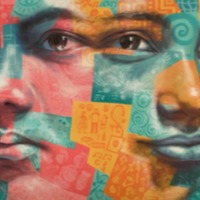
Bianca
There are an estimated 403,000 people living in modern slavery in the United States (GSI 2018). Sex trafficking exists throughout the country. Traffickers use violence, threats, lies, debt bondage and other forms of coercion to compel adults and children to engage in commercial sex acts against their will. The situations that sex trafficking victims face vary, many victims become romantically involved with someone who then forces them into prostitution. Others are lured with false promises of a job, and some are forced to sell sex by members of their own families. Victims of sex trafficking include both foreign nationals and US citizens, with women making up the majority of those trafficked for the purposes of commercial sexual exploitation. In 2015, the most reported venues/industries for sex trafficking included commercial-front brothels, hotel/motel-based trafficking, online advertisements with unknown locations, residential brothels, and street-based sex trafficking. Bianca was a teenager when she began talking to a man named Shy on the internet. At the age of 16 she travelled to San Jose to meet him. Bianca was taken to Shy’s tattoo shop and prevented from leaving. Shy placed an ad on the internet and took photos of Bianca, and then forced her in to prostitution. Bianca was finally able to leave when she feared for her life after being threatened by Shy.
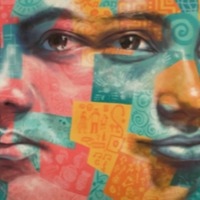
Maya C
There are an estimated 403,000 people living in conditions of modern slavery in the Unites States. Sex trafficking is a form of modern slavery that exists throughout the US. Traffickers use violence, threats, lies, debt bondage and other forms of coercion to compel adults and children to engage in commercial sex acts against their will. The situations that sex trafficking victims face vary, many victims become romantically involved with someone who then forces them into prostitution. Others are lured with false promises of a job, and some are forced to sell sex by members of their own families. Victims of sex trafficking include both foreign nationals and US citizens, with women making up the majority of those trafficked for the purposes of commercial sexual exploitation. In 2015, the most reported venues/industries for sex trafficking included commercial-front brothels, hotel/motel-based trafficking, online advertisements with unknown locations, residential brothels, and street-based sex trafficking. Maya tells of the sexual abuse she suffered as a child and how her subsequent addiction to drugs led her in to a life of prostitution. Maya was forced Maya was forced by people, including her boyfriend to prostitute herself in order to obtain drugs. Maya recalls how a group of men locked her in a room filled with dog faeces, put a collar and beat her. After being locked up for 3 days she was finally able to escape and is now sober.
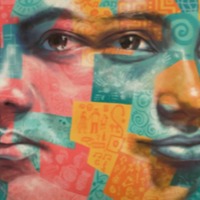
Cassie
There are an estimated 784,000 people living in modern slavery in the Philippines (GSI 2018). Men, women and children are subjected forced labour and sex trafficking both within the country and in destination countries. Women and children are subjected to sexual exploitation in brothels, bars, and massage parlours, online, as well as in the production of pornography. The Philippines is an international hub for prostitution and commercial sex tourism – a highly profitable businesses for organised criminal syndicates. The demand for sex with children among both local and foreign men has continued to fuel child sex tourism. Rising internet usage rates, the availability of mobile phones and poverty has fostered online child sexual exploitation. When Cassie was 12, a family friend took her to Manila promising to help her reach her dreams. She was forced to perform sexual acts in front of a computer. Customers all over the world would pay to watch her. IJM discovered Cassie’s story 4 years later and helped rescue her and six other victims from the house. Today, Cassie and the other children are safe at an aftercare shelter. Cassie calls this her second home.
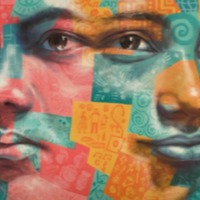
Grizelda Grootbroom
There are an estimated 155,000 people living in modern slavery in South Africa (GSI 2018). South Africa remains a source, transit and destination country for men, women and children subjected to forced labour and sex trafficking. South African children were recruited from poor, rural areas to urban centres, such as Johannesburg, Cape Town, Durban, and Bloemfontein, where girls were subjected to sex trafficking and domestic servitude and boys are forced to work in street vending, food service, begging, criminal activities, and agriculture. Local criminal rings organized child sex trafficking, Russian and Bulgarian crime syndicates facilitated trafficking within the Cape Town commercial sex industry, and Thai and Chinese nationals often organized the sex trafficking of Asian men and women. Nigerian syndicates dominated the commercial sex industry in several provinces. To a lesser extent, syndicates recruited South African women to Europe and Asia, where some are forced into prostitution, domestic servitude, or drug smuggling. Grizelda was 18 when she moved from Cape Town to Johannesburg on the promise of a friend she would have somewhere to stay. However, upon arrival, Grizelda’s friend took her to a house and after she left, Grizelda never saw her again. After a few hours, men began to arrive. Grizelda was subjected to physical abuse and forced in to prostitution.
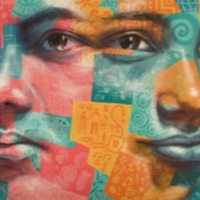
Gracie
It is estimated that there are over 9.2 million people living in conditions of modern slavery across Africa, with 101,000 of these in Central African Republic (GSI 2018). When considering forms of modern slavery, the rate of forced marriage (4.8 victims per 1000 people) was higher than the rate of forced labour (2.8 victims per 1000 people). Over half of all victims of forced labour were held in debt bondage, with similar proportions of men and women in the region trapped through dept. An estimated 400,000 people in Africa were victims of forced sexual exploitation. Within the region, Eritrea, Burundi, and Central African Republic were the countries with the highest prevalence of modern slavery; however, Nigeria and the Democratic Republic of the Congo had the highest absolute number and accounted for over one-quarter (26.3 percent) of all victims in the region. Gracie was 11 when her family was killed due to political and ethnic tension in Central Africa. A family friend took her to a neighbouring country to live with a woman where she was forced to provide sexual services to men. After two years in this brothel, Gracie was taken by a man called Abasi to London where she was once again forced in to prostitution. Gracie was able to escape after a year of sexual abuse and confinement. Told she should seek asylum Gracie appealed to the immigration office, however her passport had been faked to state she was 22 rather than 15 and she was arrested for document forgery. With the help of the NSPCC and a solicitor, Gracie was able to challenge local child services who stated she was an adult and able to find a safe place to live.
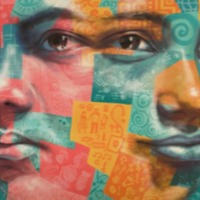
Kate
There are an estimated 3.6 million people living in modern slavery across Europe and Central Asia (GSI 2018). This region had a prevalence of 3.9 people in modern slavery for every 1,000 people in the region. Men, women and children are trafficked in to forced labour and commercial sexual exploitation. Trafficking for sexual exploitation is the most widespread for of modern slavery with an 84% of victims trafficked for this purpose. The majority of those trafficked for this purpose are women and young girls who often originate from Eastern Europe within the EU as well as Sub-Saharan Africa, with the majority of people being trafficked from Nigeria to various parts of Europe including Italy, France, Spain and the UK through an array of complex trafficking networks. Kate grew up in the UK with little support from her family. At the age of 18 she went to university, but hated it and soon left. She took up an invitation from a man she had gotten to know through an online forum to join him in Europe for a holiday. Once she arrived, she was locked in a room and forced in to prostitution. For over a year Kate was forced to provide sexual services, her passport was locked in a safe, along with the money she earned for him each day. One day, Kate was able to escape. Taking her passport and some money from the safe after having memorised the code, Kate bought a flight back to England and once she arrived, went to her previous social worker’s office who called the police. Six month later, Kate reached out to the Sophie Hayes Foundation saying she wished to be ‘normal’ again.
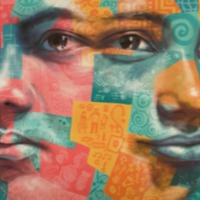
Kundamanchi Ramulamma
It is estimated that almost 8 million people are living in conditions of modern slavery in India (GSI 2018). The skewed sex ratio in some regions of India has fuelled the trafficking and selling of women and young girls as brides within India. Women are reportedly sold off into marriage by their families, sometimes at a young age, and end up enduring severe abuse, rape and exploitation by their husbands. It is also reported that women and girls from impoverished backgrounds have been lured by promises of marriage by younger men from urban areas, then forced into sex work once married. Kundamanchi Ramulamma was 15 years old when she was married to a person from her caste. After the marriage, Kundamanchi Ramulamma was sexually abused by her father-in-law. He father went to the panchayat who eventually agreed to a divorce, however, a few month later, Kundamanchi Ramulamma was forced to marry again.
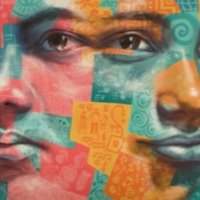
Tamzin
There are an estimated 136,000 people living on conditions of modern slavery in the United Kingdom (Global Slavery Index 2018). According to the 2017 annual figures provided by the National Crime Agency, 5, 145 potential victims of modern slavery were referred through the National Referral Mechanism in 2017, of whom 2,454 were female, 2688 were male and 3 were transgender, with 41% of all referrals being children at the time of exploitation. People are subjected to slavery in the UK in the form of domestic servitude, labour exploitation, organ harvesting and sexual exploitation, with the largest number of potential victims originating from Albania, China, Vietnam and Nigeria. This data however does not consider the unknown numbers of victims that are not reported. Tamzin was a teenager when she met a man and soon fell in love with him. However, after a couple of years this man became obsessive, controlling everything Tamzin did, forcing her to have sex and store drugs for him. Here Tamzin describes her story in her own words.
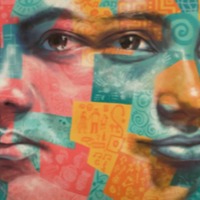
Poppy
The Global Slavery Index 2018 estimates that on any given day there were nearly 8 million people living in modern slavery in India. The GSI 2018 reports an emerging trend in northeast India where organised trafficking syndicates operate along the open and unmanned international borders, duping or coercing young girls seeking employment outside their local area in to forced sexual exploitation. Many women and girls are lured with the promise of a good job but then forced in to sex work, with a 'conditioning' period involving violence, threats, debt bondage and rape. Poppy, along with her older sister Jesmin and the rest of her family, migrated to Mumbai when she was young. Once there, Poppy and her sisters went to work in a ‘bar’ to help support their family. Poppy worked massaging men where she was subjected to physical and sexual abuse.
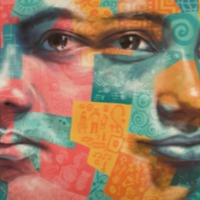
Ruma
The Global Slavery Index 2018 estimates that on any given day there were nearly 8 million people living in modern slavery in India. The GSI 2018 reports an emerging trend in northeast India where organised trafficking syndicates operate along the open and unmanned international borders, duping or coercing young girls seeking employment outside their local area in to forced sexual exploitation. Many women and girls are lured with the promise of a good job but then forced in to sex work, with a 'conditioning' period involving violence, threats, debt bondage and rape. Ruma was trafficked to Mumbai at the age of 11 by her cousin. After spending months working in her house, Ruma’s cousin then sold her to a woman from Kolkata for sex work.
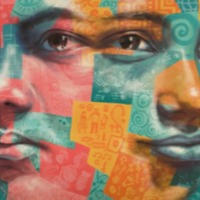
Mala
The Global Slavery Index 2018 estimates that on any given day there were nearly 8 million people living in modern slavery in India. The GSI 2018 reports an emerging trend in northeast India where organised trafficking syndicates operate along the open and unmanned international borders, duping or coercing young girls seeking employment outside their local area in to forced sexual exploitation. Many women and girls are lured with the promise of a good job but then forced in to sex work, with a 'conditioning' period involving violence, threats, debt bondage and rape. Mala was trafficked at 15 years old by a distant relative (Roma) who had been in the sex trade for a long time. Her parents were unaware of this and allowed Mala to go with Roma for a job as a nanny to her son. However, upon arrival Mala was forced in to commercial sexual exploitation.